Unplug These Appliances That Hike Up Your Electricity Bill

If you’ve ever opened your electric bill only to be shocked by the amount owed, you’ve likely also wondered exactly what you can do to save money on utilities beyond turning off lights as you leave a room.
Budgeting 101: How To Create a Budget You Can Live With
Figuring out how to reduce your electric bill can be as simple as figuring out what’s costing you the most. To do this, you can follow a simple formula to determine how many kilowatt-hours (kWh) a device is using in a month or year, and then find ways to cut back where possible.
Kilowatt-hours are essentially a way of measuring how much power a device uses in an hour of being turned on. If you look at most appliances, they will supply a wattage or a range of wattages the device operates at — how many watts it burns in an hour. Once you have the wattage, simply divide that by 1,000 (to convert the watts to kilowatts) and then multiply by how many hours a day you use the item. That will give you a basic figure for how many kilowatt-hours a day you’re using with that item.
From there, you can use the U.S. Department of Energy’s number for the average U.S. utility rate of $0.12 per kWh, or you could get more specific and get your rate straight from your energy provider. Based on what your costs are, you can then determine which appliance or device is the actual energy vampire and what’s not really using much electricity.
Last updated: Mar. 16, 2021

Random Energy Suckers
There are certain devices that still suck power even after they’re turned “off” — and that’s a major issue. You need to be aware of how many are actually continuing to draw power even when they’re not on, including devices like your computer, instant-on TVs, surround sound systems or even cable and satellite TV boxes. For that matter, anything with a built-in digital clock is pulling a little juice.
The National Resources Defense Council estimates that almost a quarter of the energy used by your home is consumed by idle devices that aren’t even on. It estimated that the average household in Northern California spends between $210 and $440 a year on energy vampires and the country as a whole spends $19 billion a year for electricity it’s not really using.
How do you deliver the proverbial wooden stake to the heart of your energy vampires? Unplug things you aren’t using, use power strips for devices you know use power while idle, adjust power settings on things like your computer or TV and consider getting timers for outlets to help control usage.
Not sure which devices are adding the biggest idle load to your energy bill? These are the top 10 culprits, according to the NRDC.
Find Out: 50 Ways To Live the Big Life on a Small Budget

1. Fishpond Equipment
Average Wattage: 220 watts
Cost per Year: $220
Although you likely can’t pull the plug on your fishpond (unless it’s not currently housing fish), consider investing in an energy-saving pump to cut down on energy costs.
Cut Out: 35 Useless Expenses You Need To Slash From Your Budget Now

2. Hot Water Recirculation Pump
Average Wattage: 28-92 watts
Cost per Year: $28-$93
Plug your hot water recirculation pump into a timer and program it to switch the pump off at times when no one is typically using hot water, such as in the middle of the night.
Learn More: 17 Biggest Budgeting Mistakes You’re Making
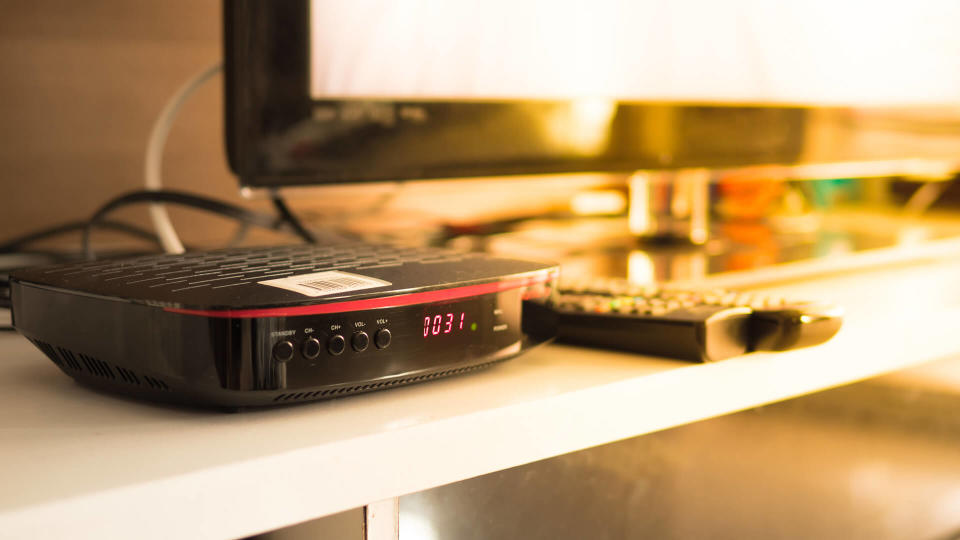
3. Set-Top Box
Average Wattage: 16-57 watts
Cost per Year: $16-$57
Many homes have multiple set-top boxes, which leads to a bigger energy suck. Consider unplugging boxes that aren’t used regularly, such as a box in a guest bedroom. For the boxes you use regularly, consider plugging the entire entertainment system (set-top box, TV, speakers, etc.) into a power strip so that the whole thing can be turned off at once.
Read Next: How I’m Sticking to a Budget and Spending Less During COVID-19
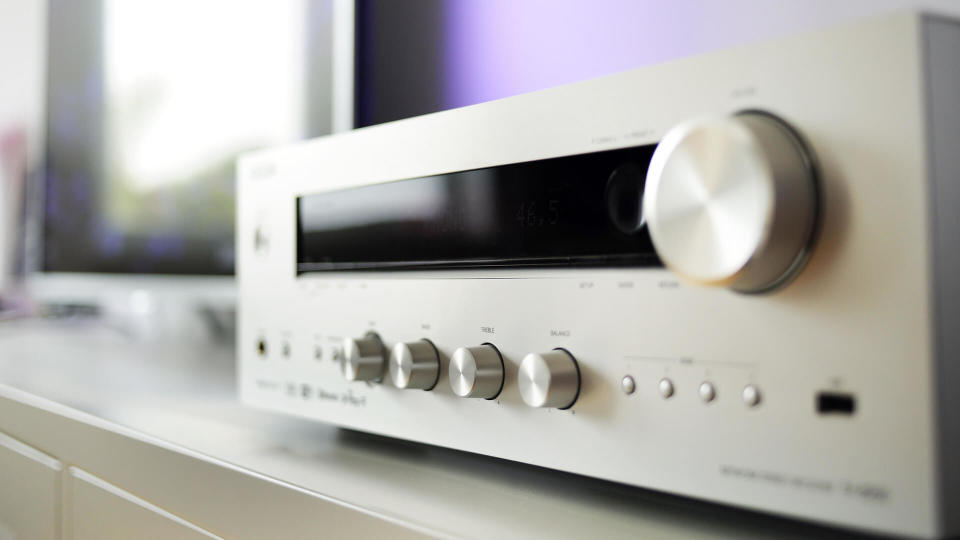
4. Audio/Visual Gear
Average Wattage: 7-40 watts
Cost per Year: $7-$40
Audio devices like amplifiers, stereos, boom boxes and internet radio receivers are easy enough to unplug when not in use. This simple act can save you up to $40 a year.

5. Fans
Average Wattage: 110 watts
Cost per Year: $111
Unplug fans when not in use, and switch to a fan with a timer so that it doesn’t stay on all night while you sleep.
Where You Should Spend: 11 Things Experts Say You Should Never Skimp On
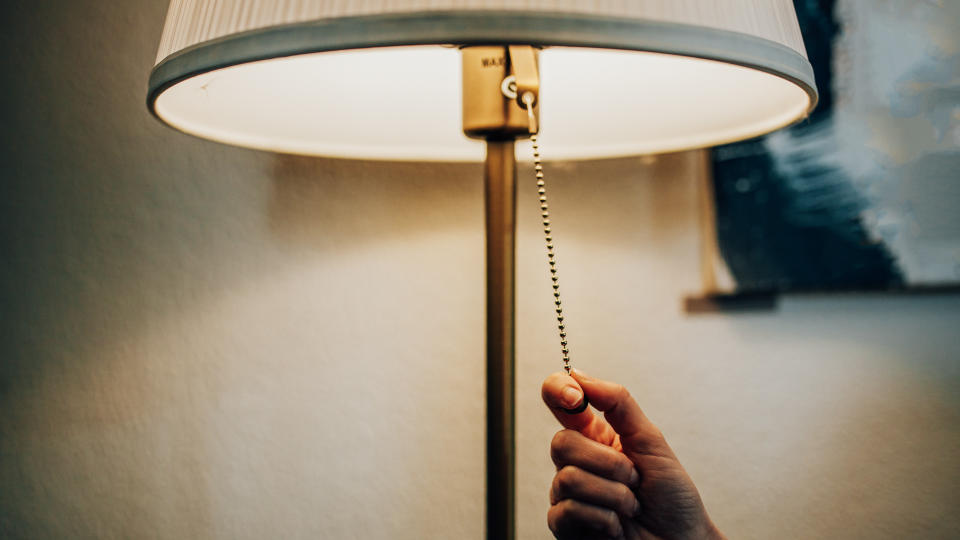
6. 24/7 Lights
Average Wattage: 4-104 watts
Cost per Year: $4-$104
There really is no need to keep a light on when you are not using it. Switch off lights when not in use or put them on a timer so that they shut off automatically.

7. Television
Average Wattage: 2-54 watts
Cost per Year: $2-$54
Unplug any TVs that you don’t regularly use, such as one in a guest bedroom. You should also adjust the power setting on your TV. Consider disabling your TV’s “quick start” setting to save on energy.

8. Aquarium
Average Wattage: 4-104 watts
Cost per Year: $4-$104
The main culprit of energy usage in your aquarium is the heater. Although you might not be able to unplug it depending on the optimum temperature for your fish, consider insulating the tank and placing it in a well-heated room to cut down on heating costs. If you have an aquarium light, unplug it when not in use.

9. Desktop Computer
Average Wattage: 1-49 watts
Cost per Year: $1-$49
Your computer doesn’t draw a ton of power, even when it’s on, with a typical desktop costing you about a penny an hour. However, even pennies can add up over the course of a year. Plug your computer, monitor, printer, computer speakers and other computer accessories into a single power strip that can be turned off when not in use. Let your computer go to sleep after a maximum of 30 minutes of inactivity, and turn your computer off whenever you’ve finished using it.
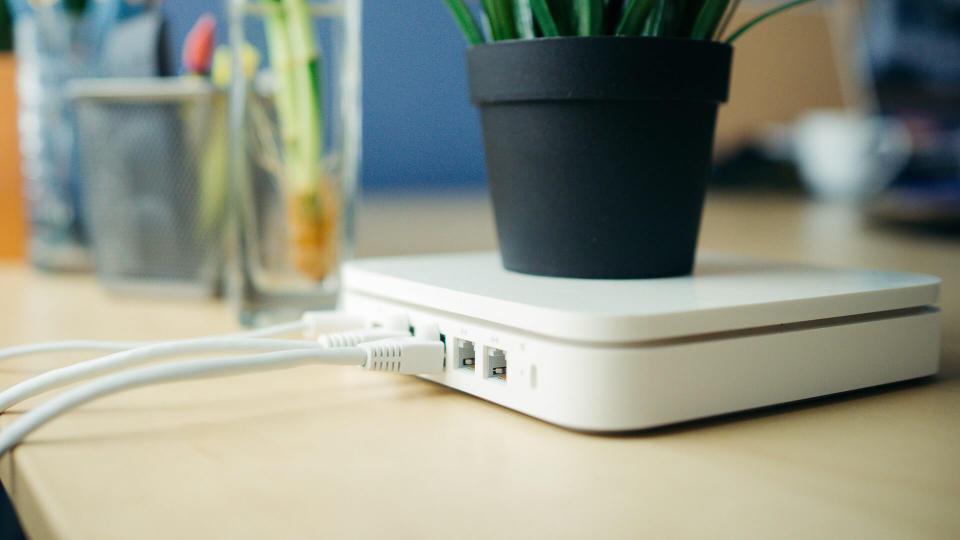
10. Modem
Average Wattage: 5-17 watts
Cost per Year: $5-$17
Unplug your modem before going to bed. You don’t need internet access when you’re asleep.
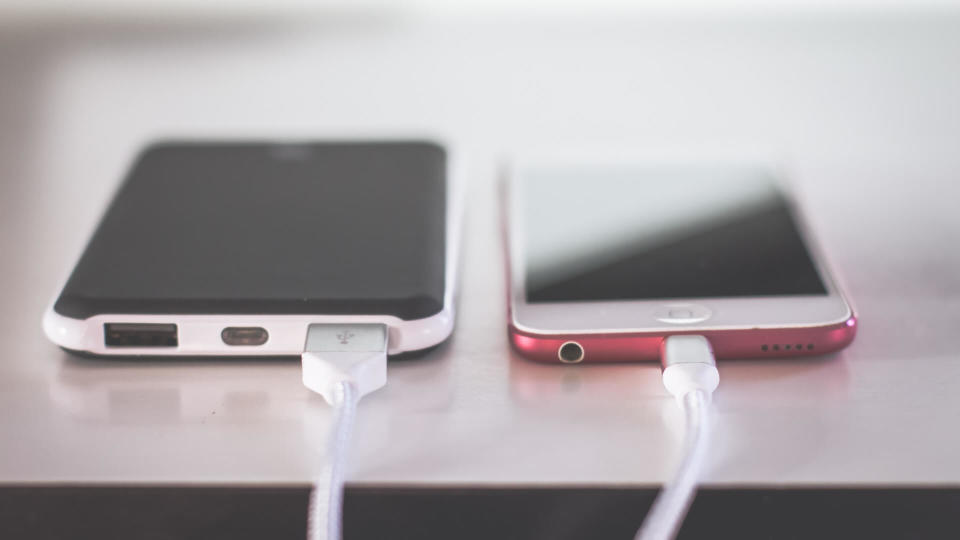
Honorable Mention: Cellphone Chargers
Average Wattage: 2-6 watts
Cost per Year: $2-$6
The 2-6 watts drawn while charging your phone seem hardly worth mentioning, but it’s the power your chargers draw while it isn’t juicing up your phone that makes this device stand out. Leaving that charger plugged into an outlet all day still uses 0.1 to 0.5 watts per hour. That is also not a lot, but in this case, it’s pure waste. If you have a charger at home that’s plugged in 24/7, you’re costing yourself up to 44 cents in electricity.
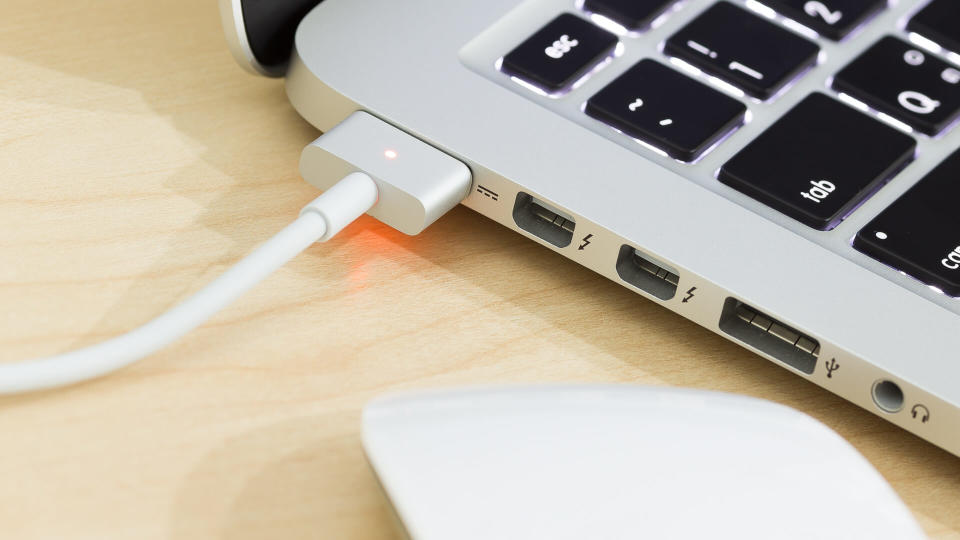
Honorable Mention: Laptop Computer
Average Wattage: 25 watts
Cost per Year: $26
Most laptop cords have a “brick,” a large box that uses energy continuously whenever it’s plugged in. This means that simply shutting your laptop or turning it off will not stop it from using energy. Unplug the cord from the wall every time you are not using your laptop to ensure it’s not draining energy you aren’t even using.

Honorable Mention: Video Game System
Average Wattage: 36 watts
Cost per Year: $38
Video game consoles are another common energy vampire. These devices often remain connected to the network even when they are not in use and are set to be in a default “instant on” mode — a mode that was disabled in Europe due to the E.U.’s standby energy standards, the National Resources Defense Council reported. Unplug your game consoles when not in use and disable the “instant on” mode if you don’t need it.

Major Energy Suckers
The following appliances and electronics use even more substantial amounts of energy and should always be unplugged when not in use, or you should try to use these items in smarter ways to lower the energy you’re using.

1. Central Air Conditioning
Average Wattage: 3,800 watts
Cost per Hour: $0.46
This is the granddaddy of them all when it comes to inflating your utility bill. Keeping your home cool in the summer is appealing, but it comes with a luxury price tag.
A 24,000 BTU central air conditioning system uses about 3,800 watts of power per hour. At $0.12 per kilowatt-hour, you’re paying $0.46 an hour to run this system, which can run 24/7 in warm climates. If that’s the case, your air conditioner could be costing you almost $11 a day, or nearly $340 a month during the summer.
Make sure you are using your system effectively by adjusting the temperature appropriately, closing off areas of the house that aren’t being used and shutting the system off completely when no one is home. Unplug the system during the cooler months to prevent it from using idle energy.
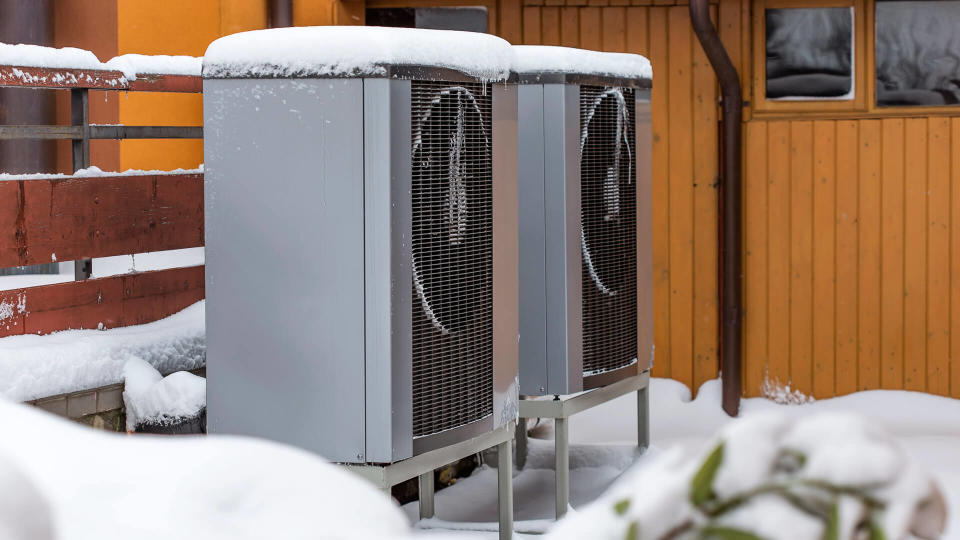
2. Heat Pump
Average Wattage: 4,700 watts
Cost per Hour: $0.56
Heat pumps can be more cost-effective than baseboard heating, but it’s important to make sure you’re using the right pump for your home and your climate. Being able to shut off heat or cooling to rooms that aren’t being used will also help keep your energy costs down.
That said, a heat pump often surpasses central air in terms of the impact on your utility bill. A heat pump uses about 4,700 watts of power, translating to a cost of about $13.54 to run it all day or nearly $420 if you have it on nonstop for a full month in the winter. Consider turning off your heat pump when you’re not home and keeping it unplugged during warmer months.
Smart Moves: 30 Essential Money Habits

3. Water Heater
Average Wattage: 4,500 watts
Cost per Hour: $0.54
Your water heater uses 4,500 watts of electricity per hour, so it’s costing you 54 cents an hour. Fortunately, your water heater doesn’t run all day long — it only runs when it’s actually heating water. The less hot water you use and the lower the temperature that water is, the less energy your water heater will use. So while the energy draw is higher than your air conditioner on an hourly basis, you will most likely run it a lot less over time — SFGate puts the typical usage at about three hours a day — a cost of about $50 a month.
It would be a lot of effort to plug and unplug a water heater device constantly, but there are other ways to save on energy costs without having to do this. Adjusting your water heater to the lower temperature setting will save energy. Make sure you are using hot water efficiently by only running the dishwasher when it’s completely full, and only using hot water to wash clothes when it’s absolutely necessary.

4. Clothes Dryer
Average Wattage: 2,790 watts
Cost per Hour: $0.33
At 2,790 watts per hour, your clothes dryer is costing 33 cents an hour to run. So, if your typical load takes about an hour, you should be getting about three loads to the dollar from an electricity standpoint. To reduce your costs, make sure you’re only drying a full load of clothes and use the drying sensor if you have one, rather than the timed drying option.
If the weather cooperates, hang sheets outside to dry. You’ll save money and, as a little treat, you’ll also get that fresh, outdoor smell. You can unplug this appliance when not in use.

5. Water Pump
Average Wattage: 725 watts
Cost per Hour: $0.09
A well pump uses about 725 watts of power per hour, costing you $0.09 cents an hour to run. Although you might not be able to unplug it, to save money when running your water pump, make sure you have the right type of pump for your home and that it’s only running when it needs to be.

6. Space Heater
Average Wattage: 1,320 watts
Cost per Hour: $0.16
Besides being a safety hazard, a space heater is an energy hog. The average one uses 1,320 watts of energy — a cost of 16 cents per hour.
Rather than using a space heater to keep a space warm, address the underlying issue. You might need additional insulation in the room you’re trying to heat, or you might be able to block drafts by sealing around doors and windows. And, as always, a sweater or a blanket should be your go-to zero-cost way to warm up.
If you do opt to use a space heater, be sure to unplug it when not in use and set it on a timer to turn off when you are sleeping.

7. Hair Dryer
Average Wattage: 710 watts
Cost per Hour: $0.09
By consuming 710 watts of electricity, your hair dryer is costing you about 9 cents per hour. You can reduce your costs by reducing usage or letting your hair air dry first — and then use the dryer just for styling. Using the low setting instead of high will reduce your energy usage as well. However, unless you’re running a salon out of your house, it’s probably a safe bet you’re using it for no more than an hour a day — meaning drying your hair probably costs a little under $3 a month. It’s also an easy enough tool to keep unplugged when you’re not using it.

8. Electric Range
Average Wattage: 1,900 watts
Cost per Hour: $0.22
Your electric range uses about 1.9 kW per hour, but that will vary widely depending on how many burners you’re using and at what intensity. Either way, even if you’re cooking for three hours a day every day, you’re still spending just a little over $20 a month on energy for your stove.

9. Refrigerator
Average Wattage: 225 watts
Cost per Hour: $0.03
Your refrigerator uses about 225 watts of power per hour, costing a mere 3 cents per hour. However, while that’s not a huge energy drain, it’s also an appliance you can’t turn off. Those 225 watts an hour translate to $262.80 annually with relatively few avenues for reducing the bill, meaning your fridge will probably cost you more in total than your space heater despite drawing a fraction of the energy on an hourly basis.
There are some tips that can help lower your electricity bill without turning off the fridge. Keep foods covered as the moisture released by foods makes the compressor have to work harder. If you’re in the market for a new refrigerator, make sure you get one that’s the right size for your family — a full refrigerator uses less energy than one that’s half-empty. And of course, decide what you want before you open the fridge to minimize the time the door’s open.
If you have more than one refrigerator, consider consolidating your refrigerated items so that you can keep the second one unplugged at most times. You might also consider getting rid of a second fridge altogether, especially if it’s older. These “energy hogs” can add $100 to your annual electricity bill, according to the National Resources Defense Council.
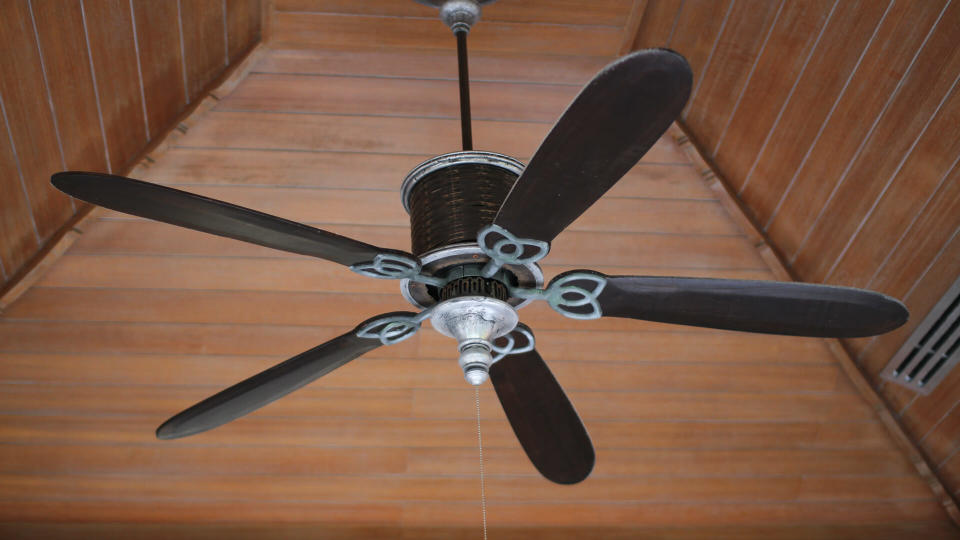
10. Ceiling Fan
Average Wattage: 35 watts
Cost per Hour: Under $0.01
A ceiling fan can be a good alternative to air conditioning. At 35 watts of consumption, leaving your ceiling fan on all day will cost you about 10 cents, which is an outrageous bargain when compared to the $11 a day your air conditioner would cost.
One great tip in climates with cooler nights is to turn on your ceiling fans in the evening while keeping your windows open. The fans can draw in cool air all evening that will help keep the home cool into the next day. You can keep ceiling fans unplugged during cooler months, or if it’s hardwired, be sure to keep it turned off.

11. Incandescent Light Bulb
Average Wattage: 60 watts
Cost per Hour: $0.01
Get this, a 60-watt incandescent light bulb uses…60 watts of power an hour. This is one case where you probably don’t have to go searching for the informational panel to get a wattage — most bulbs put it right on the package. A 60-watt bulb costs you about a penny an hour ($0.0072 to be specific) while a 150-watt bulb will run you about two cents an hour.
However, the better question might be “why are you still using incandescent bulbs?” Using newer, CFL bulbs will save you a lot in the long run — both on your energy bill and on your trips to the hardware store. Compared to a 60-watt incandescent bulb, a 15-watt CFL bulb uses a quarter of the energy and lasts 10 times as long while a 12W LED light uses as little as one-fifth as much energy and lasts 25 times as long.
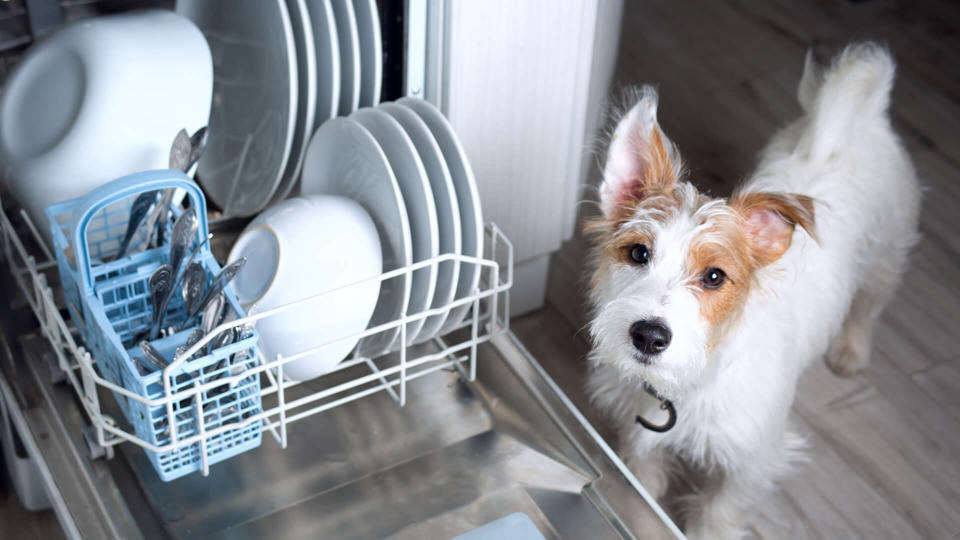
12. Dishwasher
Average Wattage: 330 watts
Cost per Hour: $0.04
The average dishwasher costs 4 cents per hour to run, meaning it likely costs you about $0.04 to $0.12 per load, depending on your washer. Even if you don’t keep your dishwasher unplugged when not in use, there are ways to reduce its energy costs. Running your dishwasher only when it is full will help you save energy, as will finding opportunities to hand-wash dishes when there aren’t enough to warrant running the dishwasher.
Household appliances are becoming more efficient all the time, so look for the most efficient model when it’s time to replace your refrigerator, dishwasher, laundry pair or other appliance. Replacing an old appliance, even if it’s still working, may make economic sense if the energy savings are there.
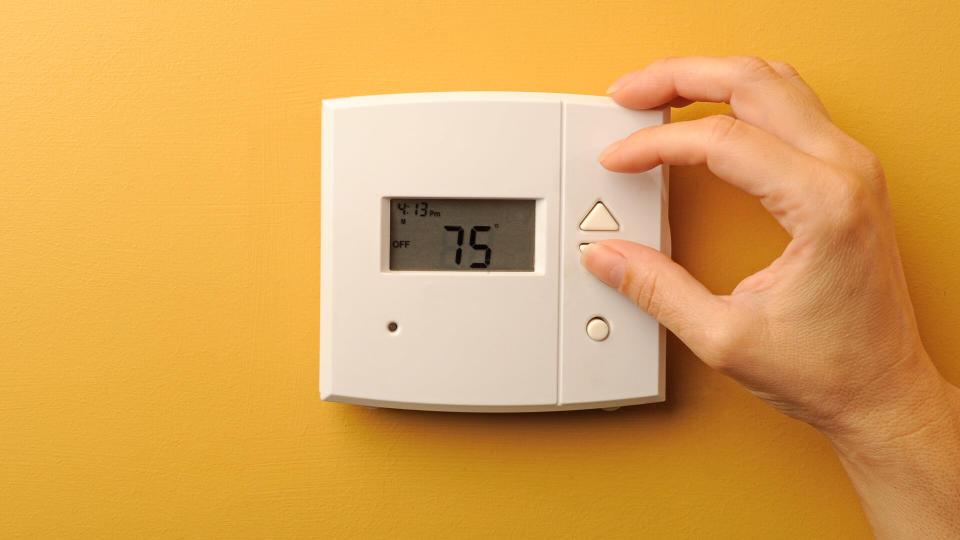
13. Furnace Fan
Average Wattage: 295 watts
Cost per Hour: $0.04
If you keep your furnace fan running throughout the year, it could add $310 to your electricity bill. Unplug your furnace during the summer if you can. If it’s hardwired, be sure to switch it off.
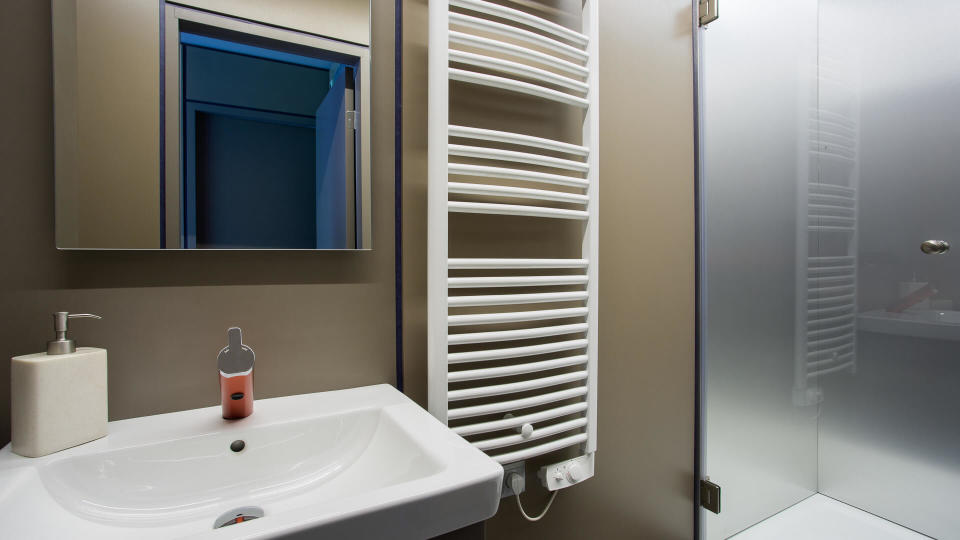
14. Heated Towel Rack
Average Wattage: 140 watts
Cost per Hour: $0.02
There’s nothing quite like wrapping yourself in a warm towel after a shower, but this little daily luxury could be costing you more than you realize. Some heated towel racks are built with no off switch or timer, which means that they are automatically on when they are plugged in. A rack that uses 140 watts could cost $140 to $375 in annual bills when plugged in 24/7, according to the National Resources Defense Council. Only keep a heated towel rack plugged in during the time around your shower, and unplug it after use.

15. Coffee Maker
Average Wattage: 1,000 watts
Cost per Hour: $0.12
Your coffee maker requires a lot of energy while in use, so it’s best to keep it unplugged when it isn’t. If you have an instant coffee maker, keep it plugged into a timer to save on its standby energy load costs.
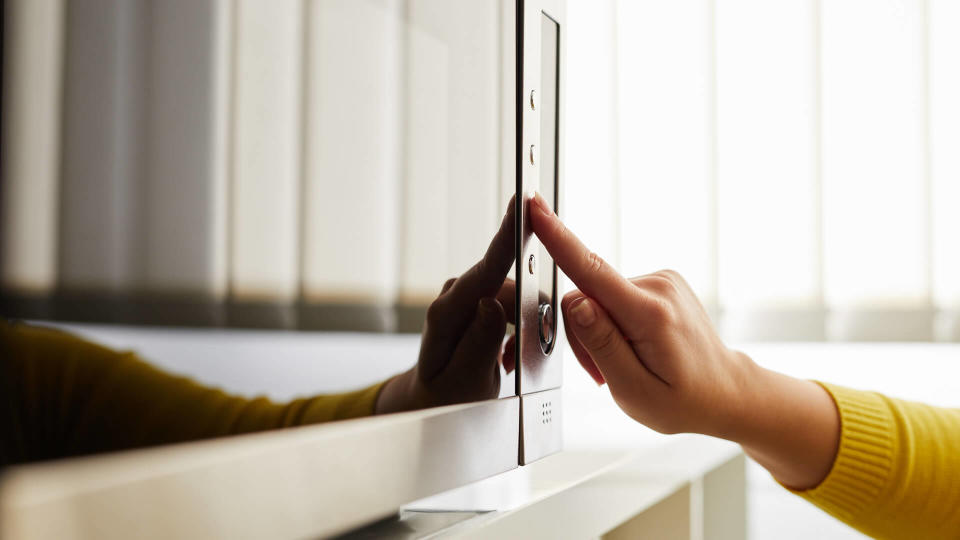
16. Microwave
Average Wattage: 1,500 watts
Cost per Hour: $0.18
It’s no surprise that a microwave oven uses a lot of energy when you’re heating up an entire meal in a matter of minutes, but it also uses energy when it’s not working. All appliances with a clock use idle energy, and a microwave is no exception. The average microwave uses 26 kWh per year in standby mode, according to the water and power company SRP, which costs the average annual household roughly $3. Chances are you can easily see the time on your watch or mobile phone when you’re in the kitchen, so there’s no need to have your microwave plugged in 24/7.

17. Laser Printer
Average Wattage: 250 watts
Cost per Hour: $0.03
Your laser printer is probably in standby mode more than it’s actually in use, so it can be easy to overlook this energy vampire. The average laser printer uses 70 kWh annually while in standby mode, according to SRP, which would amount to about $8 annually. That’s $8 that you could save by simply unplugging your printer when you’re not using it.
More From GOBankingRates
Gabrielle Olya contributed to the reporting for this article.
This story has been updated to correct the name of the Natural Resources Defense Council.
This article originally appeared on GOBankingRates.com: Unplug These Appliances That Hike Up Your Electricity Bill
